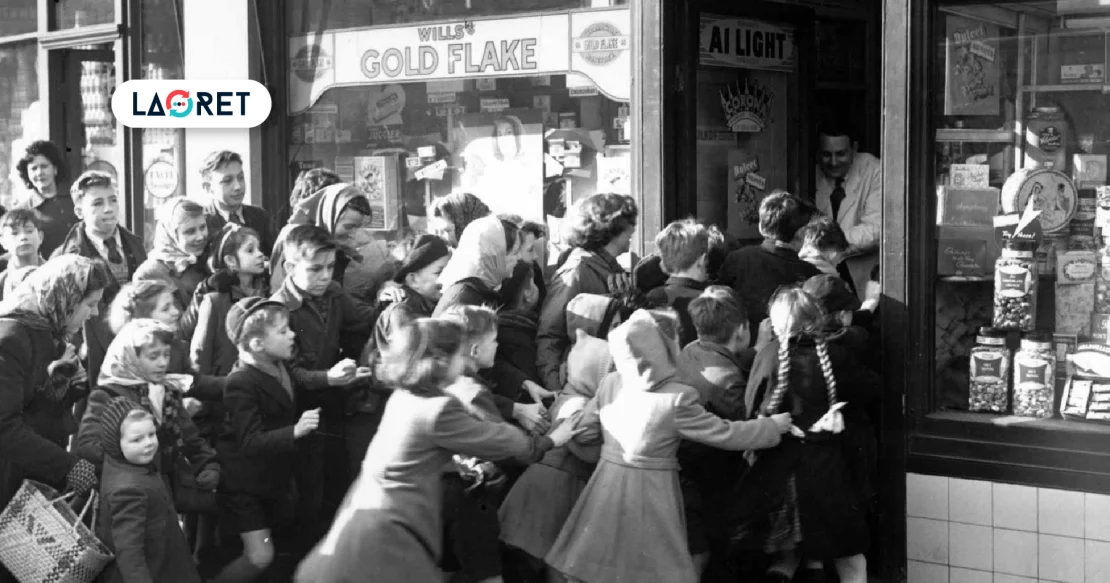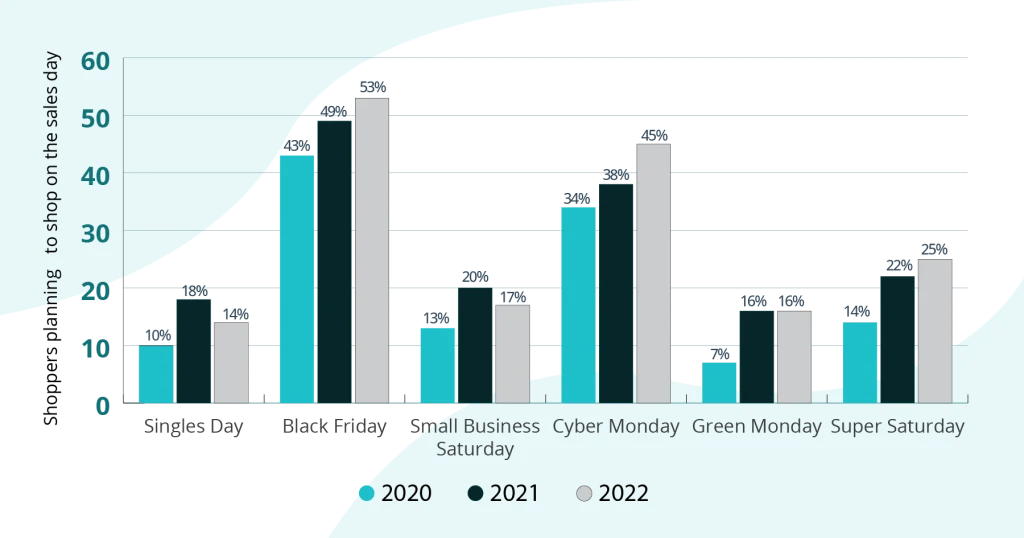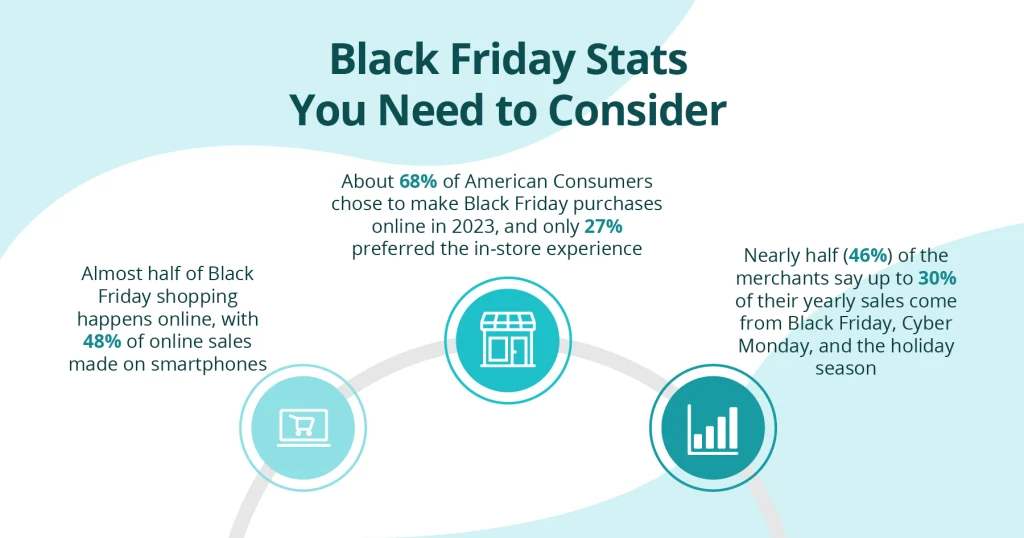What You Need to Know About The Real Black Friday History
When you hear ‘Black Friday,’ do you envision that day of the year with endless queues at shopping malls and eye-catching sale signs? While this image is familiar today, the origins of this shopping phenomenon might surprise you.
Originating in the United States, Black Friday has evolved into a worldwide retail event, officially kicking off the holiday shopping season. But have you ever wondered about its first occurrence or the story behind its captivating name?
The shopping event’s history is richer and more fascinating than you might expect. It is growing year by year, as last year 2023 accounted for a staggering $9.8 billion in sales, $680 million more than in 2022, and has become a key date for businesses worldwide.
In this blog, we will uncover the origin of the term Black Friday, trace its evolution over time, and explore its impact on today’s retail landscape.
Let’s Start!
The First Time The Term “Black Friday” Was Coined
The first time the term “Black Friday” appeared wasn’t at all about shopping. On September 24, 1869, when two Wall Street financiers Jay Gould and Jim Fisk attempted to take over the gold market, leading to a market crash and economic crisis.
What have they done?
They bought up tons of gold to drive the price up and make a fortune. It worked at first, but when President Grant found out, he ordered the Treasury to sell gold, causing prices to crash. This led to the stock market tanking and many investors losing everything.
The repercussions of their actions serve as a cautionary tale, highlighting the potential consequences of market manipulation and the importance of maintaining market stability.
This historical event holds a significant place in the timeline of financial markets and has left a lasting impact on the economy.
And because of this chaos, that day is remembered and called Black Friday.
But surprisingly, this has nothing to do with the Black Friday we know today. So, let’s now move to the story behind the birth of Black Friday as a shopping event.
A Look into The Birth of Retail’s Black Friday
The birth of retail’s Black Friday can be traced back to the bustling streets of Philadelphia in the mid-20th century.
Every year, the day after Thanksgiving, the city of Philadelphia would get super crowded. Wonder why? Because people from the suburbs would flood into the city to start their holiday shopping usually on the Friday after Thanksgiving. Plus, there is a big Annual Army-Navy football game held on Saturday following Thanksgiving Day, bringing in even more visitors.
And managers reportedly used “Black Friday” to describe the day many workers would call in sick to extend the Thanksgiving holiday.
But for the police officers, this Friday was a real headache. They were not allowed to request a day off and had to work long hours dealing with:
- Packed streets and stores
- Traffic jams
- More accidents than usual
- Lots of shoplifting
The cops started calling this crazy day “Black Friday.” It was their way of describing all the chaos they had to handle.
Rebranding Black Friday
Retailers initially disliked the negative connotations associated with “Black Friday” due to its historical origins and chaotic scenes, seeking to shift the focus from chaos to consumer spending.
In the late 1980s, retailers made a strategic move to rebrand Black Friday by reframing it as the day they became profitable, hence being “in the black”.
This term is drawn from the business world’s use of “in the red” to describe the state of losing money and “in the black” to reference making a profit. This rebranding effort involved presenting Black Friday as the day when holiday sales nudged the industry into profitability.
Ultimately, this rebranding was a marketing success, as it changed public perception and solidified Black Friday’s association with deals and discounts, making it a highly anticipated event for consumers, a day of unparalleled shopping opportunities.
Do you think that is all? Luckily, no. Black Friday has evolved more and more as a global phenomenon.
Black Friday’s Evolution From Local Term to Global Phenomenon
It is undeniable that Black Friday has proven years of success with other big events as well, it is the number that proves so.
The evolution of Black Friday’s success has been a fascinating journey that has transformed the way people approach holiday shopping. Originally rooted in the United States, Black Friday has grown into a global phenomenon.
And a fun fact is that what started as a day of massive sales and promotions has expanded to pave the way and include other significant shopping events.
For example, the emergence of Cyber Monday in 2005 has significantly impacted Black Friday, as online shopping has become increasingly popular. Cyber Monday, which takes place the Monday after Thanksgiving, offers consumers a chance to capitalize on online deals, further extending the holiday shopping spree.
In response to the overwhelming focus on large retailers during Black Friday, Small Business Saturday was created to highlight and support local businesses. This event has played a crucial role in redirecting attention to smaller establishments, encouraging consumers to shop locally, and supporting their communities.
So, the global spread of Black Friday has been remarkable, with retailers in various countries adopting the concept and offering their own unique interpretations.
This global phenomenon has transcended geographical boundaries and cultures, shaping the way people around the world approach holiday shopping. Overall, Black Friday has transformed how, when, and where we hunt for bargains, becoming a truly global retail extravaganza.
The Modern Black Friday
Black Friday’s impact goes beyond just stores. It affects factories making products, and shipping companies delivering goods, and creates lots of temporary jobs. It’s like a big economic domino effect.
The modern Black Friday is different and is really a major economic force in the retail world that even pandemics didn’t affect it.
As in 2020, the holiday shopping season, including Black Friday, raked in over $789 billion in sales, according to the National Retail Federation. How did this come? Because the future is online, the eCommerce world helped Black Friday sales to grow even more.
While Black Friday once had a reputation for chaotic in-store crowds and reported fights & injuries as people rushed for deals, the landscape has dramatically shifted because of the online sales opportunity.
This eCommerce shift has made shopping safer and easier, letting people participate in shopping events and grab bargains and black friday deals from the comfort of their homes instead of battling crowds.
The rise of online shopping, however, presents new challenges for businesses. With customers shopping globally, companies must now focus on translating and localizing their websites to cater to diverse preferences.
This includes adapting everything from user interfaces and experiences to payment methods and currency options, ensuring a seamless shopping experience for customers worldwide.
As Black Friday continues to evolve, its transformation from a single-day, in-store event to a global online phenomenon highlights the changing face of retail in our increasingly connected world. But how can you win it?
How to Win Black Friday as a Retailer
To win the Black Friday season, it’s crucial to understand its history and significance and use that knowledge to your advantage. Black Friday has grown from a chaotic day into a global shopping phenomenon, emphasizing the need to understand cultural nuances and context in communication.
It’s important to grasp the cultural vibe of your audience and shoppers, as what works in one place might not work in another. Thinking local, even when going global, is key.
It’s not just about translating your ads – it’s about speaking your customers’ language in every way and understanding your customers’ preferences and shopping habits. Think of it: Are they impulse buyers or careful planners? Do they love tech or prefer traditional stuff? This kind of insight should be your strategy to win.
Here’s a list of things businesses need to consider when expanding Black Friday sales and translating for different shoppers:
Remember, one size definitely doesn’t fit all in the global marketplace. The businesses that really get this – the ones that take the time to understand and respect different cultures – they’re the ones that’ll be raking in the profits even long after Black Friday ends.
So, embrace the power of localization this Black Friday and watch your business thrive across borders! That’s how you win not just Black Friday, but the whole year-round retail game.
Laoret, Your Translation & Localization Partner This Black Friday
This Black Friday, expand your reach with expert translation and localization services. Our ISO-certified team of linguists and cultural specialists will ensure your deals resonate in over 120 languages and markets.
Don’t let language barriers limit your sales. Let Laoret help you create a truly global Black Friday campaign that speaks directly to each market’s needs and preferences.





